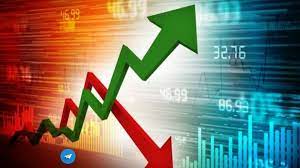Although CFD is a derivatives market, it doesn’t mean that there aren’t basic risks to be aware of when trading. Here are 10 common risks you should know:
1) Leverage risk: When you trade CFDs, you’re usually offered leverage. Leverage is the ability to control a larger amount of a financial instrument than what you have deposited in your account. For example, if you deposit $1,000 in your account, and the broker offers you 10:1 leverage, you can trade up to $10,000 worth of CFDs. Because you need to keep only one-tenth of the trade value as your initial deposit, leverage can be very attractive. However, leverage also carries significant risk. If the market moves against you and your margin level declines below a certain percentage (usually 100%), it is possible for your broker to close all or some of your positions without giving you a chance to provide more money.
2) Commissions and spreads: When trading CFDs, you have to pay commissions and spreads on the trades. This can add up if you’re not careful, so be sure to factor these costs into your CFDs trading strategy.
3) Illiquidity risk: CFDs are often traded on a margin. This means that even if you hold positions for a short period of time, you may have to pay the full spread (which can be large). If the market is illiquid and has low trading volume, it’s possible for your broker to close your position when the price moves against you.
4) Interest rate risk: Although short-term CFD positions are usually closed out within a few days, your broker may roll over any outstanding positions to the next month. This means that you may have to pay interest if you keep the position open overnight. Be sure to check with your broker on their policies regarding rolling over or closing out positions before trading.
5) Counterparty risk: When you trade CFDs, you’re entering into a contract with your broker. This means that your broker is the counterparty to the trade. In other words, if you lose money on the trade, it’s because your broker made money. Be sure to choose a reputable and well-capitalized broker to avoid the risk of your broker going bankrupt.
6) Financial reporting risk: CFDs trade on margin, which means that there is only a limited amount of capital required for each position. This can allow you to leverage your trades. However, it also makes it harder to determine the profitability of your trading strategy since a small change in price can result in a large change in your realized or unrealized P&L.
7) Margin call risk: A margin call is when your broker asks you to provide more money to cover the losses on your trade. If you don’t have the money to cover the margin call, your broker may close out your position.
8) Stop-loss order risk: A stop-loss order is an order to sell a security when it reaches a certain price. The purpose of a stop-loss order is to limit your losses on a trade. However, if the market is illiquid, it’s possible for your stop-loss order to be executed at a very different price than you specified.



